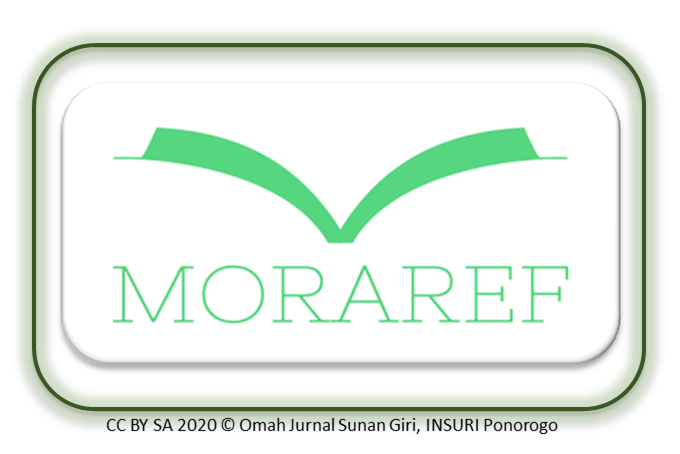Digitizing Da'wa Movement of Pesantren Baitul Hidayah Through Productive Waqf
Keywords:
Digital Da'wa, Pesantren, Waqf, MillenialAbstract
The trend of millennial Muslims is currently learning religion through online media. The challenge is not all religious information in online media follows the wasathiyah source of Islamic teachings. Thus, Islamic boarding schools as religious institutions must seek to provide religious information through da'wah's digitization. To meet the need for digitizing da'wah, Islamic boarding schools can take advantage of productive waqfs, such as the Baitul Hidayah Islamic Boarding School. This study uses a qualitative descriptive approach with data sources obtained through interviews, documentation, and observation. The purpose of the study was to obtain an overview of the use of Productive Waqf as the capital of Baitul Hidayah Islamic Boarding School in the digital da'wah movement. The results showed that the development of the digital da'wah movement through the use of productive waqf at the Baitul Hidayah Islamic Boarding School was carried out in several ways, including strengthening Islamic boarding school management resources by forming an exceptional team with multimedia capabilities from content planning, editing, and publication on social media. In addition, through productive waqf, Baitul Hidayah Islamic Boarding School also facilitates the provision of adequate digital infrastructure and a particular multimedia room for producing digital da'wah content. The development of a digital da'wah movement through productive waqf at the Baitul Hidayah Islamic Boarding School is also carried out by selecting a dai capable of religious, scientific capacity to present quality and interesting da'wah content, especially for Muslim millennials.
References
Ahmad, S. (2011). Wakaf Produktif Dan Problematikanya Di Dunia Pesantren. Millah, XI(1), 275–289. https://doi.org/https://doi.org/10.20885/millah.vol11.iss1.art14
Alhidayatillah, N. (2017). Dakwah Dinamis Di Era Modern (Pendekatan Manajemen Dakwah). An-Nida’, 41(2), 265–276. https://doi.org/http://dx.doi.org/10.24014/an-nida.v41i2.4658
Aziz, M. A. (2004). Ilmu Dakwah. Prenada Media Kencana.
Azrai Azaimi Ambrose, A. H., Gulam Hassan, M. A., & Hanafi, H. (2018). A Proposed Model For Waqf Financing Public Goods And Mixed Public Goods In Malaysia. International Journal Of Islamic And Middle Eastern Finance And Management, 11(3), 395–415.
Azzam, A. H. A. (2009). Upaya Pemberdayaan Tanah Wakaf Produktif Bagi Kesejahteraan Ummat. Islamica, 4(1), 95.
Budiantoro, W. (2017). Dakwah Di Era Digital. Komunika. Komunika, 112, 263–281. https://doi.org/https://doi.org/10.24090/komunika.v11i2.1369
Bungin, B. (2017). IN Metodologi Penelitian Kuantitatif. Kencana.
Choiriyah. (2017). Wakaf Produktif Dan Tata Cara Pengelolaannya. Islamic Banking, 2(2), 25–35. https://doi.org/https://doi.org/10.36908/isbank.v2i2.29
Galuh Putri Riyanto. (2021). Jumlah Pengguna Internet Indonesia 2021 Tembus 202 Juta Artikel ini telah tayang di Kompas.com dengan judul "Jumlah Pengguna Internet Indonesia 2021 Tembus 202 Juta ", Klik untuk baca: https://tekno.kompas.com/read/2021/02/23/16100057/jumlah-pengguna-inte. https://tekno.kompas.com/read/2021/02/23/16100057/jumlah-pengguna-internet-indonesia-2021-tembus-202-juta
Hendi Suhendi. (2018). Optimalisasi Aset Wakaf Sebagai Sumber Dana Pesantren Melalui Pelembagaan Wakaf,. Tahkim, Jurnal Peradaban Dan Hukum Islam, 1(1), 1–20. https://ejournal.unisba.ac.id/Index.Php/Tahkim/Article/View/3417
Husain, A. (2020). Dakwah Islamiyah Dan Tantangannya Di Era Digital” Al-Muqkidz. Kajian Keislaman, 8(1), 104–118. https://doi.org/https://doi.org/10.52802/amk.v8i1.190
Kasdi, A. (2015). Reinterpretasi Konsep Wakaf Menuju Pengembangan Wakaf Produktif. Ziswaf : Jurnal Zakat Dan Waqf, 2(1158–173). https://doi.org/http://dx.doi.org/10.21043/ziswaf.v2i1.1540
Khuza'i, R. (2019). Developing A Waqf Institution Through Repairment Management And Institutional Legalization, Advances In Social Science, Education And Humanities Research. Atlantic Press, 307. https://doi.org/https://doi.org/10.2991/sores-18.2019.61
M. Munir, D. (2015). Manajemen Dakwah. Prenadamedia Group.
Miftahul Huda. (2019). Fundraising Wakaf Dan Kemandirian Pesantren (Strategi Nazhir Wakaf Pesantren dalam Menggalang Sumber Daya Wakaf). Intelegensia, 7(11–13). https://ejournal.unisnu.ac.id/JI/article/view/402/735
Mohamad, F., Asmak, S., Rahman, A., Marican, S., Raimi, L., Patel, A., & Adelopo, I. (2014). The Role Of Share Waqf In The Socio-Economic Development Of The Muslim Community: The Malaysian Experience"Corporate Social Responsibility, Waqf System And Zakat System As Faith-Based Model For Poverty Reduction. Humanomics International Journal Of Social Economics World Journal Of Entrepreneurship Management And Sustainable Development, 30(3), 227–254. https://doi.org/Http://Dx.Doi.Org/10.1108/Wjemsd-09-2013-0052
Moleong, L. J. (1990). Metode Penelitian Kualitatif. Rosdakarya.
Nurhayati, N. (2021). Optimizing The Collection Of Zakat Funds Using Digital Technology In Indonesia. The International Journal Of Business & Management., 9(4). https://doi.org/10.24940/theijbm/2021/v9/i4/BM2104-016
Qahar, M. (2005). Manajemen Wakaf Produktif. Pt Khalifa.
Riduwan. (2018). Pengantar Statistik Sosial. Alfabeta.
Ridwan, M. (2018). Waqf Dan Pembangunan Ekonomi. Ziswaf : Jurnal Zakat Dan Waqf, 4(1), 105. https://doi.org/Https://Doi.Org/10.21043/Ziswaf.V4i1.3034
Sadeq, A. M. (2002). Waqf, Perpetual Charity And Poverty Alleviation. International Journal Of Social Economics, 29(1–21), 135–151. https://doi.org/Https://Doi.Org/10.1108/03068290210413038
Shaikh, S. A., Ismail, A. G., & Mohd Shafiai, M. H. (2017). Application Of Waqf For Social And Development Finance. Isra International Journal Of Islamic Finance, 9(1), 5–14. https://doi.org/Https://Doi.Org/10.1108/Ijif-07-2017-002.
Sugiyono. (2011). Metode Penelitian Kuantitatif Kualitatif dan R&D. CV. Alfabeta.
Suhendi, H. (2021). Strategi Peningkatan Penghimpunan Wakaf Melalui Kegiatan Dakwah Di Pesantren Baitul Hidayah. Jurnal Manajemen Dan Bisnis: Performa, 18(2), 1–10.
Suryani, Y. I. (2016). Wakaf Produktif (Cash Waqf) Dalam Perspektif Hukum Islam Dan Maqāṣid Al-Sharī‘Ah. Jurnal Penelitian Sosial Keagamaan, 24(1), 17–36. https://doi.org/10.21580/ws.24.1.680
Zaini, A. (2015). Melalui Televisi. AT-TABSYIR. Jurnal Komunikasi Penyiaran Islam. Jurnal Komunikasi Penyiaran Islam., 3(1), 1–20. https://journal.iainkudus.ac.id/index.php/komunikasi/article/viewFile/1642/1478
Zulkarnaini. (2015). Dakwah Islam Di Era Modern. RISALAH, 26(3), 151–158. https://doi.org/http://dx.doi.org/10.24014/jdr.v26i3.1271
Downloads
Published
Issue
Section
License
The author(s) retain/s the copyright and grant/s Muharrik: Jurnal Dakwah dan Sosial the first publication rights licensed under the Creative Commons Attribution-NonCommercial 4.0 International (CC BY-NC 4.0) , which allows others to access (search, read, download and quote), share (copy and redistribute the material in any media or format) and adapt (mix, modify and develop) works for legitimate non-commercial purposes, with recognition of the authorship of the work and its initial publication in this journal.













